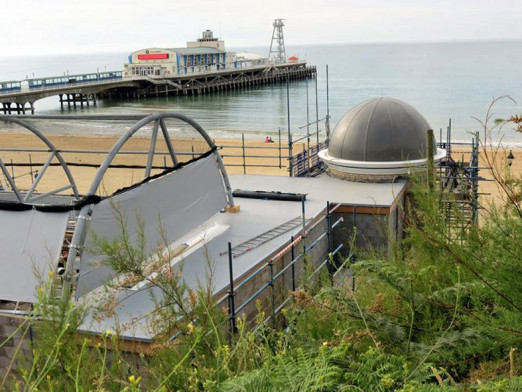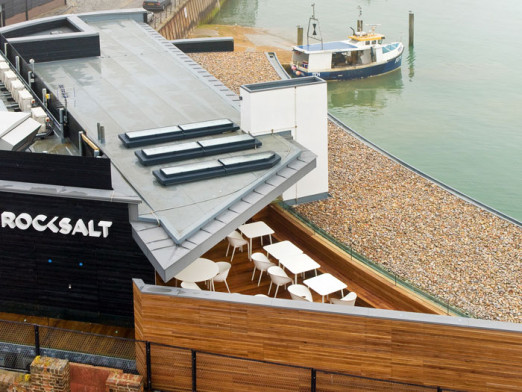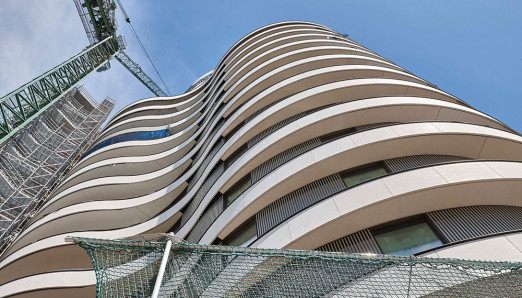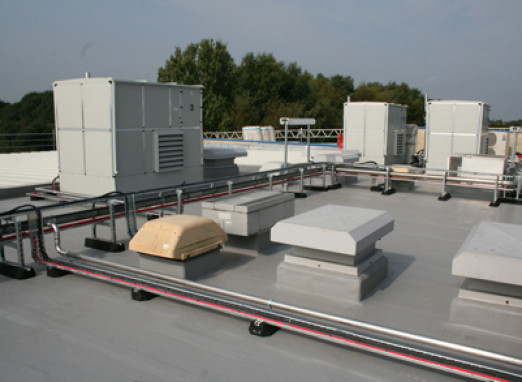Flat roofs have long held a place in architects’ hearts for reasons of aesthetics, cost and functionality.
While their conceptual and visual simplicity is undoubtedly part of the appeal, specifiers should be under no illusion as to the detailing rigour that is required to achieve a solution that is fit for purpose and provides long-term protection from the elements. Adding to the complexity of the design process is the number of different flat roofing materials and systems available – each with its own individual characteristics and technical requirements. So how should architects approach this critical aspect of building design? We ask SIG Design & Technology’s technical director Stephen Cleminson.
What are the most important things to consider when designing flat roofs?
SC: “It varies dramatically really, as a flat roof is not one specific thing – there are many different types, e.g warm, cold, inverted and each with many different layers in their build up to get right. What is key, is to look at the design holistically – how does the roof interface with other elements? Does it have plant equipment on it? Where are the outlets? How will rain water be directed to these locations? How will it be maintained in the future? And so on.
“Ideally, architects should engage with a roofing expert at the earliest possible stage to discuss all aspects of the specification for a flat roof and how it interacts with other elements of the building. Changing the specification of a single element can avoid common problems associated material clashes, interface incompatibilities, interstitial condensation, insufficient U-values, and practical buildability.
“In practical terms, it’s best to design from the top down, with careful consideration given to parapet and upstand heights at the outset. This will help to avoid problems relating to issues such as low door thresholds and lack of adequate falls for drainage later on. Whether it be for reasons of cost, time or complexity, many specifiers aim only to meet the minimum standard of 1 in 80 achieved falls for a flat roof, leaving little room for error when it comes to building tolerances and mid-span roof deflection. This can result in non-compliance and problems at a later date.
“Similarly, upstand heights should go beyond the minimum standard, allowing future refurbishment or extension work to accommodate predicted increases in insulation depth without compromising critical junctions around rooflights and other openings.”
What common mistakes do specifiers make when designing flat roofs?
SC: “Undoubtedly it’s the failure to always take a holistic view. Architects should pay particular attention to project sequencing and preceding trades. For example, the dressing of roofs around openings and reveals needs to be completed before doorways, rooflights and clerestorey windows are installed. Achieving adequate long-lasting weather protection around these critical junctions can be nigh-on impossible if these elements are already in place.
“Procedures such as fitting balustrades and mansafe systems also need to be properly co-ordinated to avoid damaging the roof covering. Many manufacturers have conducted mansafe testing, so are well placed to advise on correct detailing and site co-ordination for different systems.
“Another important consideration is whether the roof will be used for material storage or as a loading deck during construction. For a warm roof on a concrete deck, it may be worth upgrading the vapour control layer to a robust bitumen-based product, and delaying installation of the insulation and waterproof membrane. When the roof deck has served its purpose as a loading or storage platform, any necessary local repairs can be made to the VCL before the rest of the roof is installed.
“This approach not only avoids the cost of temporary roof protection, but also ensures that the finished roof does not look secondhand or like a patchwork quilt! Obviously, it’s important to carefully control access once the roof is finished.”
What should architects pay special attention to during the installation phase?
SC: “Specifiers should insist on full QA and QC procedures to ensure the roof is properly constructed. Hold points are also important, as they give architects the opportunity to check key elements of the roof design as they are completed, such as VCL laps. This can include photographic evidence of correct procedures.
“SIG Design & Technology does not sell its products to installers who have not completed one of our product-specific, SPRA-approved (Single Ply Roofing Association) training courses. SIG field technicians then support these newly accredited installers by visiting site regularly. Ultimately, we want installers to use our products with a high degree of expertise and confidence.”
How should flat roofs be maintained to maximise their life expectancy?
SC: “Maintenance should always be in accordance with the manufacturer’s recommendations and the British Standards. Flat roofs should be inspected at least twice a year – more if they are located in areas with lots of trees. Among the biggest threats to the long-term performance of flat roofs can be leaves, saplings and other vegetation on poorly maintained installations.
“SIG D&T roofing warranties are issued with a maintenance plan, which must be adhered to as a means of validation. Regular scheduled inspections resulting in clearance of detritus and early detection of damage is essential to ensure flat roofs meet and surpass their guarantee period.”
What are the advantages and disadvantages of cold and warm roofs?
SC: “Cold roofs are currently less popular in the UK due to the need for increased depths to meet current U-values and the requirement for through-ventilation. For architects it’s more a question of whether to specify a warm or inverted roof. The latter places the waterproof layer at the base of the roof build-up where it is less susceptible to damage and UV-degradation. On the downside, the WPL can be difficult to access in the case of water ingress.
“More often than not, our recommendation for a concrete deck would be to use a hot-melt system. It’s fully adhered to the substrate so water can’t track through the roof layers in the case of damage or poorly designed or unplanned penetrations. This makes finding faults much easier. A single-ply membrane is often recommended for flat roofs that do not require multiple penetrations or a mass of plant and equipment, as it is simple, economical and quick to install.
“One of the advantages of SIG Design & Technology is that it supplies a wide range of different flat roofing systems and can therefore recommend the best product for the application. When it comes to the advantages and disadvantages of different flat roofing systems, such as hot melt, cold-applied or membrane, we tend to take a scenario rather than product-based view. Specification will ultimately depend on answers to specific questions, such as how complex is the roof? Are there additional NHBC or FM requirements? What if any penetrations are required?”
What are the latest flat roofing products from SIG and what are their benefits?
SC: “Our most notable recent product is Hydrostop AH-25, a wet-on-wet, cold-applied liquid waterproofing system that is particularly suited to complex roofs and balconies, or where there are lots of plant and equipment. It is also suitable for refurbishment and repair applications, and can be installed on inverted or green roofs. A further benefit is that the system is virtually odourless and does not require heat, flames or hazardous chemicals on site, making it installer-friendly and non-disruptive to building occupants on refurbishment projects.
“Overall, the main recommendations I would make to architects are to seek early engagement with flat roofing experts, take a holistic approach, and go beyond the minimum standards where possible. In other words, design from the roof down!”










